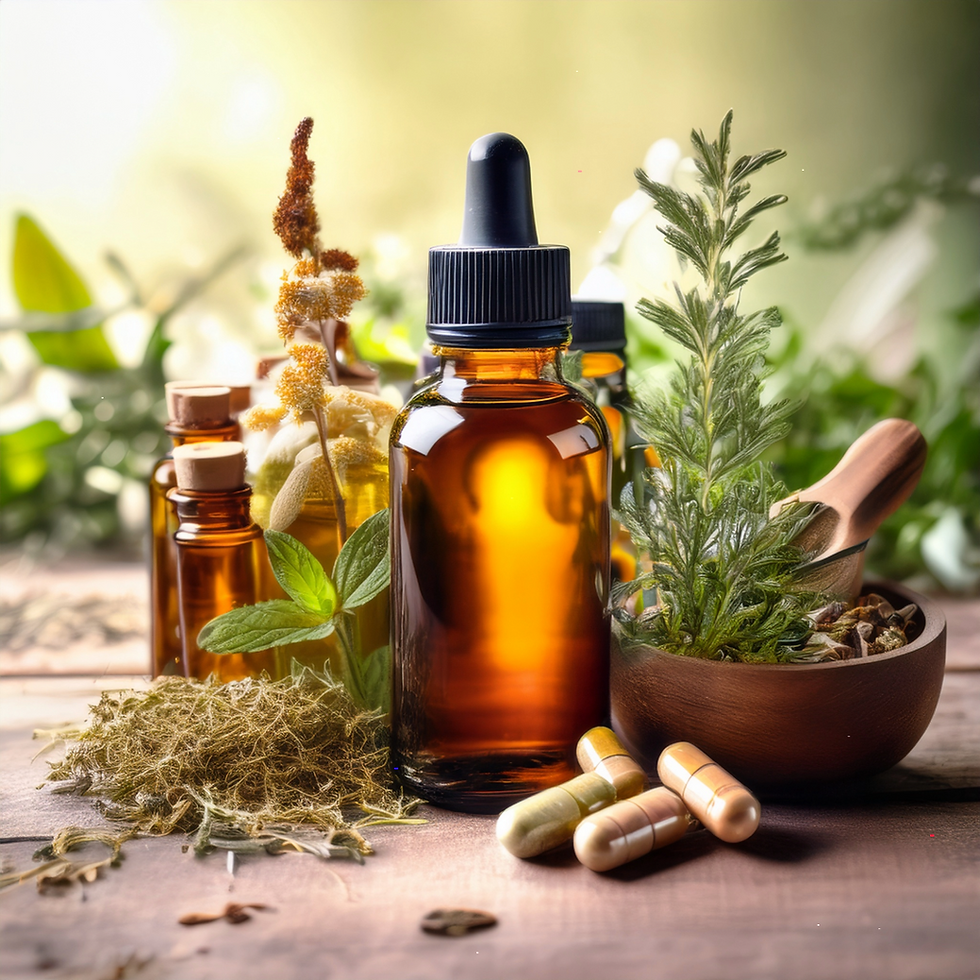Building Your Herbal Nutritional Toolkit
- Kenneth Wright
- Aug 5
- 2 min read

Medical Disclaimer: The information provided in this blog series is for general knowledge and educational purposes only. It is not intended to diagnose, treat, cure, or prevent any disease or medical condition. Always consult with a qualified healthcare provider before beginning any new herbal regimen or making significant changes to your health routine, especially if you are pregnant, nursing, have a chronic illness, or are taking prescription medications. Use herbs responsibly and in consultation with trusted professionals.
Once you've identified which herbs and spices work for your body, it's time to create a practical toolkit.
Effective Methods:
Fresh and dried herbs in cooking.
Powdered herbs in natural capsules.
Teas, extracts, and tinctures.
Avoid overreliance on gummies and tablets, which often contain fillers. Instead, focus on whole-form herbal preparations. Keep vitamin and mineral reference charts handy. For example, nettle is high in calcium and iron, while cinnamon offers manganese and chromium.
Over time, you'll create a sustainable routine that supports holistic health. Botanical Nutrition isn't about quick fixes; it's about integrating plants into your everyday life for lasting wellness.
Consider assembling a small home apothecary stocked with your favorite herbal allies. Glass jars of dried nettle, cinnamon sticks, turmeric powder, and more can be kept in a cool, dark place and used as needed. Learning basic herbal preparation techniques like tincture-making or capsule-filling can expand your self-care options and reduce dependence on commercial products.
Additionally, staying educated and adaptable is important. Nutritional needs can change with age, season, and life circumstances. Regularly revisiting your herbal toolkit and adjusting your habits helps keep your approach to wellness dynamic and responsive.
Botanical Nutrition is not a static prescription; it's a living practice that grows with you.
You might also incorporate seasonal planning into your toolkit. Rotate herbs and spices based on what grows fresh at different times of the year, and use preservation methods like drying, freezing, or making syrups to extend their availability. This practice connects you with natural cycles and ensures a varied nutrient intake.
Finally, share your herbal knowledge with others. Teaching friends or family how to make a simple tea blend or infused oil can spread the benefits of Botanical Nutrition within your community. Collective learning and sharing help keep herbal traditions alive and thriving.
Get ready to dig deeper into the world of Botanical Nutrition with our upcoming video series on the Verdigris Market Garden YouTube Channel! 🌿 In this engaging, educational series, Master Herbalist Kenneth Wright will guide you through the fundamentals of nourishing your body with herbs, spices, and whole foods. You’ll learn how to identify nutrient-rich botanicals, avoid the pitfalls of ultra-processed foods, and build your own herbal nutritional toolkit. Whether you’re an aspiring herbalist, a health-conscious foodie, or simply curious about natural wellness, these videos bring the knowledge of the blog series to life with step-by-step demonstrations, real-world examples, and inspiring garden-to-table tips. Subscribe today at Verdigris Market Garden on YouTube so you don’t miss a single episode!
#VerdigrisMarketGarden #BotanicalNutrition #HerbalNutrition #PlantBasedWellness #NaturalHealthLiving #HealingWithHerbs #WholeFoodWellness #HerbalistLife #FromGardenToTable #HerbsForHealth





Comments